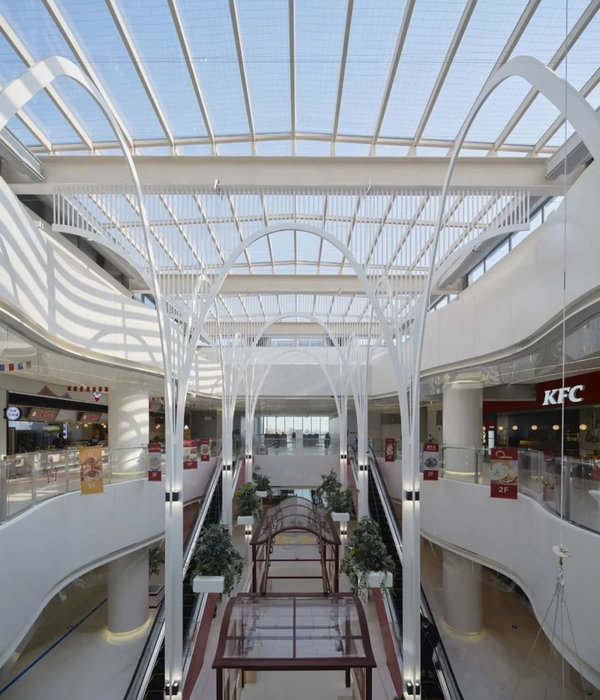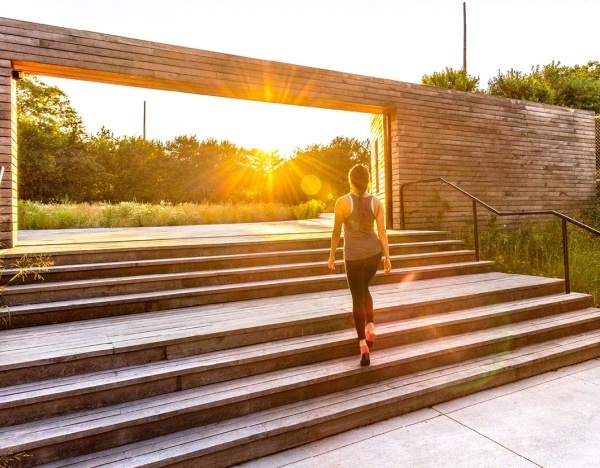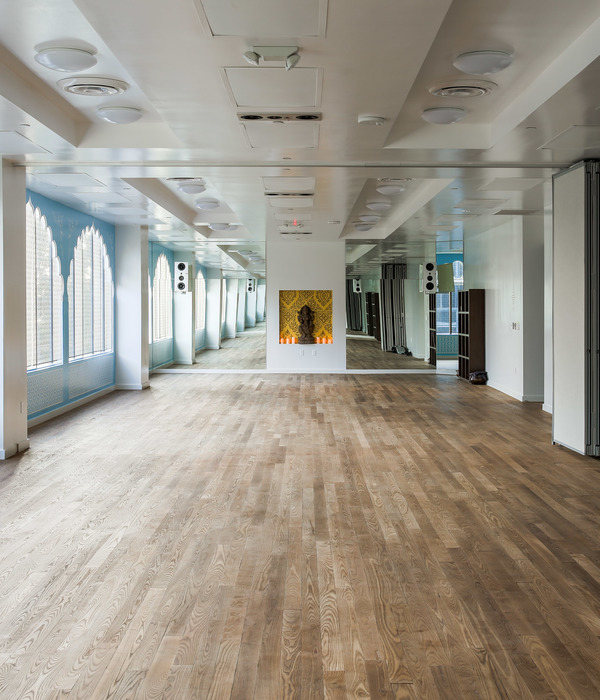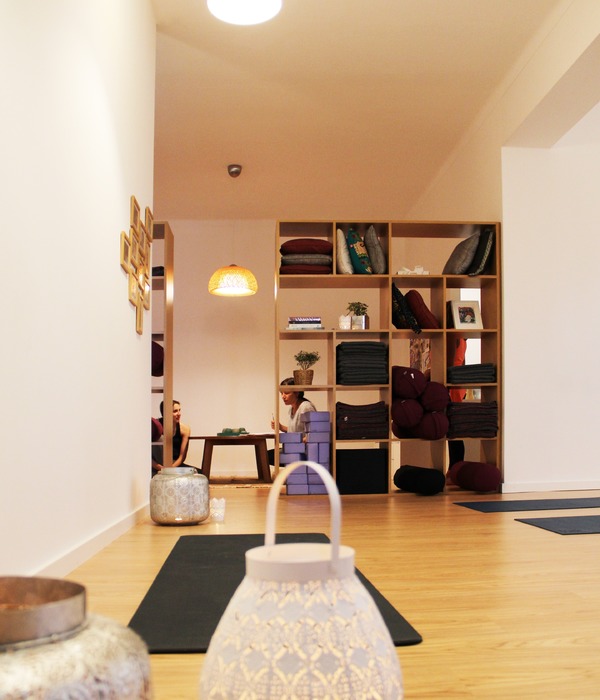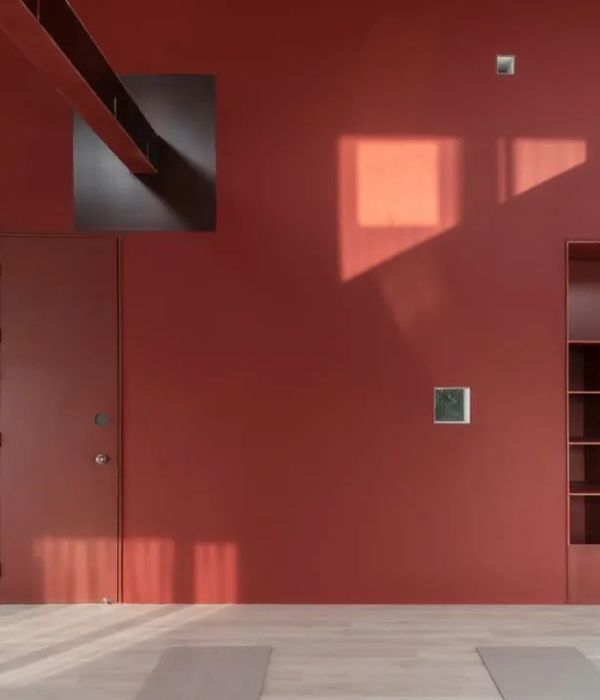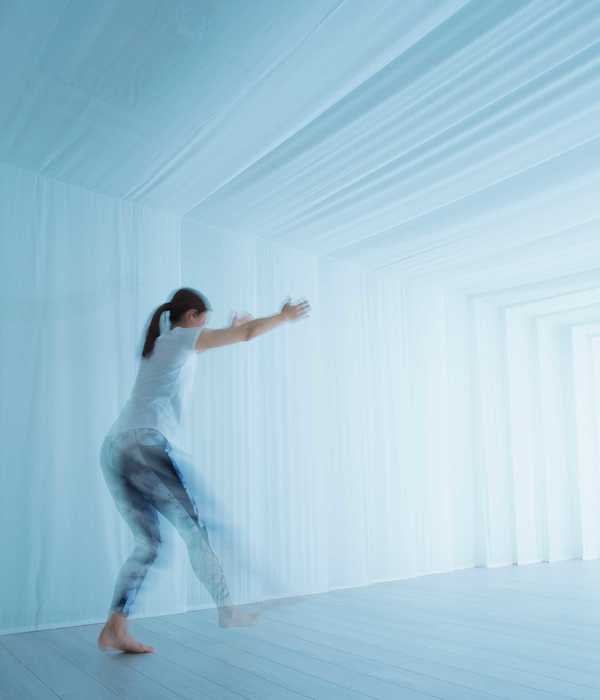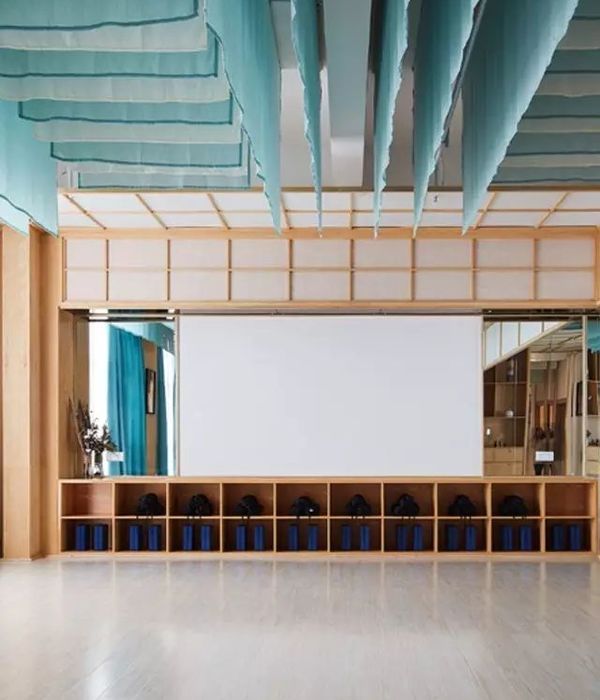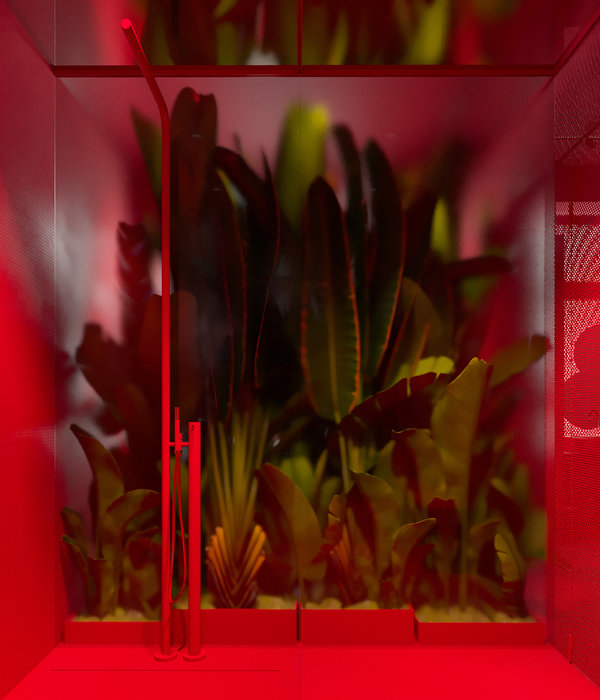Architects:FATHOM
Area:94m²
Year:2023
Photographs:Tatsuya Tabii
Manufacturers:TAKARA BELMONT
Design:Hiroyuki Nakamoto
Direction:E., Taichi Enomoto
Steel Works:KAMO CRAFT, Susumu Murata
Logo Design:Listen, Kentaro Ooi
Program:Hair Salon and Store
City:Hiroshima
Country:Japan
Text description provided by the architects. This is a complex of a hair salon and an apparel store that connects fashion and beauty. After considering the area ratio of the two businesses in the limited area of 30 tsubo, the idea of not separating the two businesses equally, but rather having the apparel store as a one-on-one face-to-face sales operation with the apparel store as one of the cutting seats, came to mind. Instead of arranging a variety of designs and sizes as in a regular apparel store, we thought that if we could select clothes based on sharing the customer's taste, sense, and feeling that only a hair stylist can gain from providing long hours of face-to-face service, and if we could create a small store with products selected just for that person, it would be We thought it would be a good idea.
To this end, the store space was purposely placed in a corner with a minimum area for two people to stand and move around, surrounded by windows and a sense of openness, with a stockroom adjacent to it in a sculptural three-dimensional shape as an eye-catcher. The designers have taken this into consideration so that the act of selecting a product for the person is strongly impressive and visible. The difference in the area ratio of the two areas was designed to avoid the impression that the hair salon is attached to the apparel shop so that only the apparel shop and the stockroom can be seen from the entrance.
Detail - While thinking about what architecture can do to connect the two industries, I was reminded of a phrase I often heard from craftsmen when installing furniture on site. It is ["A hair's breadth of space".]. It was an unfamiliar phrase. I believe that considering hair as the smallest module of the body is a hint to connect fashion and beauty this time. By recognizing a single strand of hair as a long, thin line, it can be connected to a single thread. By weaving one strand over another, it becomes a piece of cloth, which is then transformed into clothing using various techniques. The spatial composition of the work is also conscious of a delicate line, like a strand of hair, while at the same time considering the possibility of expanding into a rich surface and connecting it to the space.
Architectural boundaries are created by differences in materials, material standards, and different functions. By arranging the gaps in various dimensions within the space and making people aware of a single invisible line as the smallest module of the space, and then combining the line as a material, surfaces of various densities are created. The apparel and salon are made of steel mesh walls made of expanded metal composed of lines and gaps, softly blocking the line of sight-like fabric.
In contrast, the walls of the stockroom are made of steel sheets that are bent and naturally flexed to create a dome-like space with cubic curves. The mesh is made more compact to form a single surface, and the beauty of the curves of clothes, which are soft like cloth and beautifully clothe the human body three-dimensionally, is expressed sculpturally with the same material of steel.
The material is composed of one color of white, which has been slightly reduced so that the two industries are connected and blend together in a single space. The shadows created by the natural light and sunlight are projected in a way that changes with the time of day and the seasons, creating a comfortable space that is inorganic, yet somehow warm and inviting, with a sense of human touch.
Project gallery
Project location
Address:3F 7-21 Hukuromachi Naka-ku, Hiroshima-city, Hiroshima-prefecture, Japan
{{item.text_origin}}

